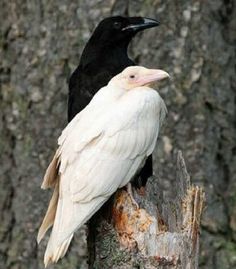Your personal Tumblr library awaits
Celtic Reconstructionism - Blog Posts
The Morrígan
“Thou hast no power against me," said Cúchulainn. "I have power indeed," said the woman; "it is at the guarding of thy death that I am; and I shall be," said she. The Cattle-Raid of Regamna, from the Yellow Book of Lecan
The Morrígan is depicted in the Irish cycles as a member of the Tuatha Dé Danann, the wife* of the Dagda, and a goddess ruling over the spheres of fate, death, war, and land. She is often associated with ravens, crows, and heifers, whose forms she takes.
Name & Epithets: Morrígan, Morrígu, Mórrígan (Middle Irish— “Great Queen”), Mór-Ríoghain (Modern Irish)
Role as a Goddess of War
The Morrígan is seen in the Cycles as bringing victory in war, or foretelling death in battle. In the Cath Mage Tuired, which describes how the Tuatha Dé Danann overthrew the tyrannical Fomorians, she proclaims the victory of the gods over their enemy and foretells the end of the world. In the Ulster Cycle, she is the sometimes-patron, sometimes-enemy of the hero Cúchulainn, whose death she prophesies after he offends her, and then reminded of his fate by taking the form of an old woman washing his bloodied clothes in a creek.


Role as a Sovereignty Goddess
Sovereignty goddesses in Irish tradition represent the land itself, and thus marriage to one creates a legitimate rule or guardianship over that land. In Early Medieval Ireland (and perhaps before), a king’s coronation would include a symbolic marriage to the land, thereby granting himself power and legitimacy. The Morrígan is one such sovereignty goddess, or at least perceived as one by the 12th Century, as the Book of Invasions names her the sister of Ériu, Banba, and Fódla, personifications of Ireland married to each of her three kings.


Role as a Triplicate Goddess
The Morrígan is inconsistently referred to as one of three or a combination of three figures. In the Mythological cycle, she is named as the sister of Badb (’crow’), a war goddess, and Macha, a land goddess. Together, they are called the three Morrígna. Macha is also the name of several other figures, and Badb appears barely distinguishable from the Morrígan. Whatever the case, the names appear less like the archetypal ‘Maiden, Mother, Crone’, and more like simply different aspects of the goddess given different titles, as is common in Irish religion.


*Marriage with the Dagda
The fact of her “marriage” with the Dagda is contentious but well-supported by the texts we have access to. One of her best-known stories from the Cath Mage Tuired is the Dagda’s pact with her before the battle against the Formorians. This part of the text is often mistranslated as the Dagda meeting her [for the first time] at a certain point in the year, when really a perhaps more accurate translation would be “On this day [near Samhain] the Dagda met her yearly.” Additionally, the “union” described between her and the Dagda does not appear to be purely sexual. The word used, ‘oentaith’ is difficult to translate but probably also refers to a general agreement/pact [dil.ie/33541], not unlike a modern marriage. Additionally, as a king of the Tuatha Dé Danann, a ceremonial marriage to a sovereignty and agricultural goddess such as the Morrígan would be appropriate for the Dagda and make sense to an early Irish audience.
My UPG with the Morrígan
Recommended reading + Sources
Cath Mage Tuired [Translation] [Original]
Book of Invasions
The Cattle-Raid of Regamna